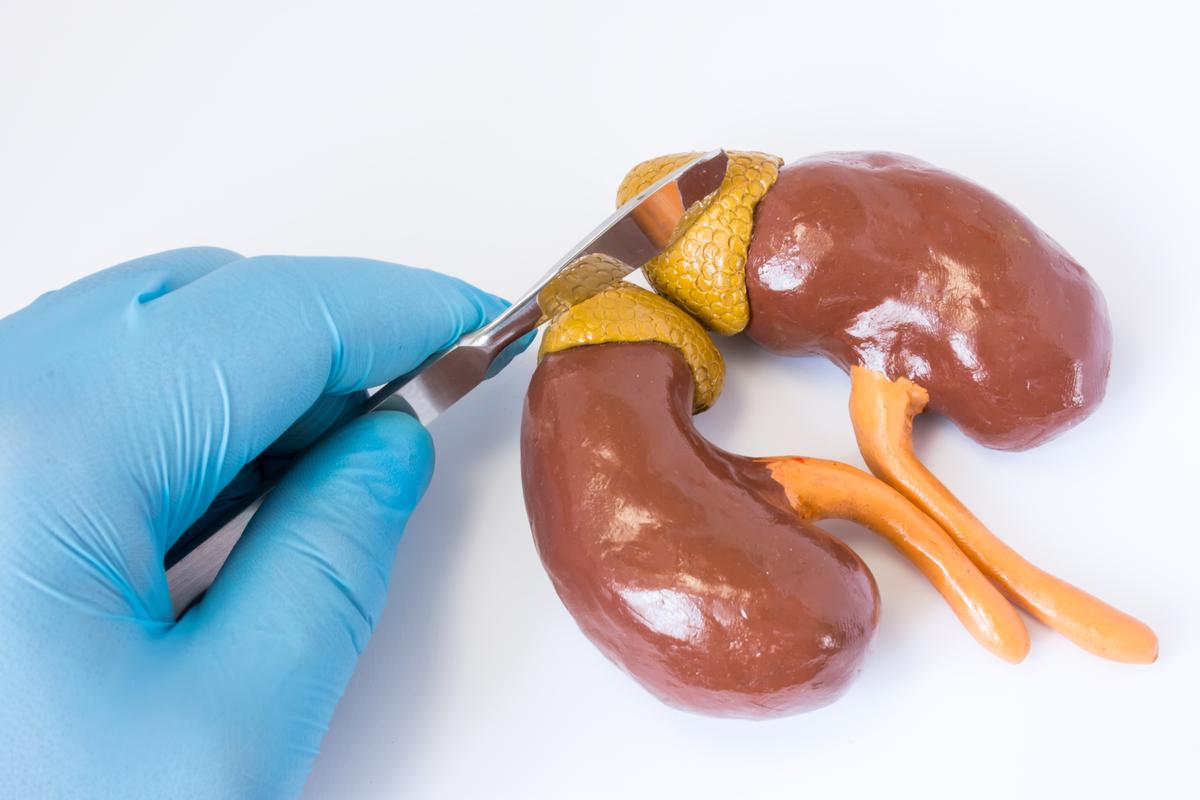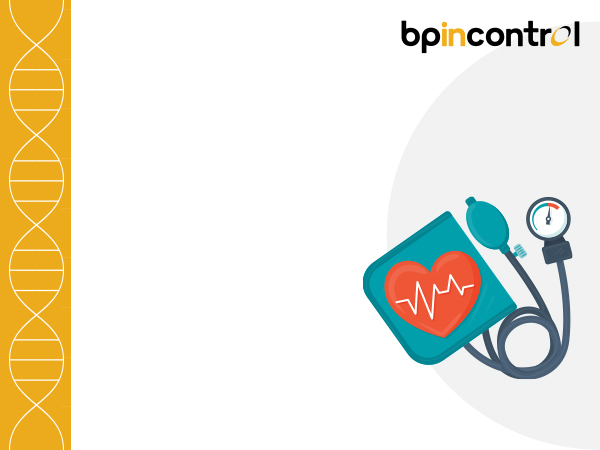Pheochromocytoma: Symptoms, Causes, Diagnosis & Treatment

Table of Contents
What is Pheochromocytoma?
Pheochromocytoma is a rare tumour that develops in the adrenal glands, which are located on top of the kidneys. These tumours arise from the chromaffin cells, which produce and release hormones called catecholamines, including adrenaline and noradrenaline. Pheochromocytomas can occur at any age but are most commonly diagnosed in adults between the ages of 30 and 50.
These tumours are usually non-cancerous (benign), but they can still cause significant health issues by releasing excessive amounts of catecholamines into the bloodstream. The excess hormones can lead to episodes of high blood pressure, hypertension headaches, rapid heart rate, sweating, and other symptoms related to the body’s “fight or flight” response.
Symptoms of Pheochromocytoma
Pheochromocytoma can cause a variety of symptoms due to the excessive release of catecholamines produced by the tumour. Pheochromocytoma symptoms can vary in severity and may occur episodically or persistently.
Here are the common pheochromocytoma symptoms:
- Hypertension (high blood pressure): Pheochromocytoma often leads to episodes of severe high blood pressure that can be intermittent or sustained. These episodes can cause symptoms such as hypertension headaches, sweating and palpitations.
- Palpitations and rapid heart rate: Due to the excessive release of adrenaline and noradrenaline, individuals with pheochromocytoma may experience a rapid or irregular heartbeat, along with a sensation of palpitations or pounding in the chest.
- Headaches: Pheochromocytoma-related headaches are typically severe and may be accompanied by nausea or vomiting. These headaches often occur in episodes and are commonly described as pounding or throbbing.
- Tremors or shaking: Some individuals with pheochromocytoma may experience tremors or shaking, which can be related to the excess release of adrenaline.
- Profuse sweating: Excessive sweating, particularly during episodes of high blood pressure, is a common symptom. Sweating may occur even without physical exertion or in cool environments.
- Anxiety or panic attacks: The hormonal imbalance caused by pheochromocytoma can lead to feelings of anxiety, nervousness, and even panic attacks.
- Weight loss: Unexplained weight loss may occur due to the increased metabolic rate associated with pheochromocytoma.
It’s important to note that the symptoms of pheochromocytoma can mimic other conditions, making diagnosis challenging.
Causes of Pheochromocytoma
The exact cause of pheochromocytoma is not always clear. However, in most cases, it occurs sporadically, meaning it is not inherited or caused by a specific gene mutation. Nevertheless, certain factors and conditions have been associated with an increased risk of developing pheochromocytoma.
- Genetic factors: Approximately 30% of pheochromocytoma cases are associated with hereditary conditions. These conditions are caused by mutations in specific genes that control the growth and development of the adrenal glands. The most common hereditary conditions associated with pheochromocytoma are:
- Multiple endocrine neoplasia type 2 (MEN2): This condition is characterised by the development of tumours in multiple endocrine glands, including the adrenal glands.
- Von Hippel-Lindau (VHL) syndrome: This condition is characterised by the development of tumours in the brain, spinal cord, and other organs, including the adrenal glands.
- Neurofibromatosis type 1 (NF1): The growth of tumors in the neurological system, together with additional issues like skin abnormalities and learning impairments, define this condition.
- Hereditary paraganglioma syndromes: These syndromes are characterised by the development of tumours in the adrenal glands and other parts of the body.
- Sporadic cases: The majority of pheochromocytomas occur sporadically, without a known inherited genetic mutation. The underlying cause in these cases is not fully understood, but certain factors may contribute to their development. These factors include:
- Exposure to certain chemicals, such as pesticides and heavy metals.
- Head injury or other trauma to the abdomen
- Long-term use of certain medications, such as reserpine.
- Chronic kidney disease: While rare, there is a possible association between pheochromocytoma and chronic kidney disease. Chronic kidney disease refers to long-term damage to the kidneys, often resulting from conditions like high blood pressure or diabetes. However, more research is needed to fully understand the relationship between the two.
It is important to note that while chronic kidney disease may be a potential factor, the majority of pheochromocytoma cases are not directly caused by this condition.
Diagnosis & treatment for Pheochromocytoma
Diagnosis and pheochromocytoma treatment may involve a combination of clinical evaluations, imaging tests, and surgical interventions.
Diagnosis for Pheochromocytoma:
- Medical history and physical examination: Your healthcare professional will review your medical history and perform a physical examination to assess symptoms, blood pressure, heart rate, and other relevant factors.
- Blood and urine tests: Laboratory tests can measure levels of catecholamines (such as adrenaline and noradrenaline) and their metabolites in your blood and urine. These tests help detect abnormalities and provide valuable diagnostic information.
- Imaging studies: Various imaging techniques are used to locate and visualise the tumour. These may include:
- CT scan (computed tomography): A specialised X-ray technique that provides detailed cross-sectional images of the adrenal glands and surrounding structures.
- MRI (magnetic resonance imaging): Uses powerful magnets and radio waves to create detailed images of the adrenal glands
- MIBG scan: A nuclear medicine scan that uses a radioactive substance to detect and localise pheochromocytoma cell.
- PET (positron emission tomography) scan: In some cases, a PET scan may be used to identify and evaluate the extent of the tumour.
- Genetic testing: If there is a suspicion of an inherited form of pheochromocytoma, genetic testing may be recommended to identify specific gene mutations.
Treatment for Pheochromocytoma:
- Surgery: Surgical removal of the tumour is the primary treatment for pheochromocytoma. The goal is the complete removal of the tumour while preserving normal adrenal tissue whenever possible. The specific surgical approach (open surgery or minimally invasive laparoscopic surgery) depends on the tumour’s size, location, and characteristics, as well as the surgeon’s expertise.
- Medications: Before surgery, medications may be prescribed to control symptoms and stabilise blood pressure. Alpha-blockers and beta-blockers are commonly used to block the effects of catecholamines and manage high blood pressure.
- Genetic counselling: If a hereditary form of pheochromocytoma is identified, genetic counselling may be recommended to assess the risk of developing additional tumours and to provide guidance on screening and management for family members.
In a Nutshell
If you suspect you may have a pheochromocytoma or have been diagnosed with this rare tumour, it’s crucial to seek the expertise of a skilled healthcare professional. They can guide you through the diagnosis process, develop an individualised treatment plan, and provide the necessary support for your journey to recovery.
Finding the right physician, who specialises in pheochromocytoma, is a vital step in ensuring you receive the best care possible. At our Find a Physician webpage, you can discover a network of experienced doctors who are well-versed in diagnosing and treating this condition. They possess the knowledge, skills, and resources necessary to navigate the complexities of pheochromocytoma and provide personalised care tailored to your specific needs. Don’t let uncertainty linger or face this challenge alone.
Take control of your health today!
FAQs
1. What are the 5 H's of pheochromocytoma?
The 5 H’s of pheochromocytoma are:
- Hypertension: Pheochromocytoma often leads to episodes of high blood pressure.
- Headaches: Severe headaches, often described as pounding or throbbing, are common symptoms.
- Hypermetabolism: The excess release of catecholamines can increase metabolic rate, leading to weight loss and increased sweating.
- Hyperglycemia: Pheochromocytoma can cause high blood sugar levels.
- Hyperhidrosis: Excessive sweating, even without physical exertion or in cool environments, is frequently observed in individuals with pheochromocytoma.
2. Why is it called pheochromocytoma?
Pheochromocytoma gets its name from the chromaffin cells found in the adrenal medulla, which contain pigments that stain a dark colour (pheo) upon exposure to chromium salts (chromo). These tumours originate from these chromaffin cells and produce and release catecholamines, including adrenaline and noradrenaline.
3. How is pheochromocytoma diagnosed?
Pheochromocytoma is diagnosed through a combination of clinical evaluations and various tests, including:
Medical history and physical examination
Blood and urine tests to measure catecholamine levels
Imaging studies such as CT scans, MRI, MIBG scans, or PET scan
Genetic testing to identify specific gene mutations
4. What is the most common cause of pheochromocytoma?
The most common cause of pheochromocytoma is the sporadic form, which means it occurs without a known inherited genetic mutation. However, approximately 30% of cases are associated with hereditary conditions like multiple endocrine neoplasia type 2 (MEN2), von Hippel-Lindau (VHL) syndrome, neurofibromatosis type 1 (NF1), and hereditary paraganglioma syndromes.
5. What is the gold standard test for pheochromocytoma?
The gold standard test for diagnosing pheochromocytoma is the measurement of catecholamine levels in the blood and urine. This involves collecting multiple samples of blood and urine over a specified time period to assess the levels of adrenaline, noradrenaline, and their metabolites. This test helps confirm the presence of excessive catecholamines, which is a characteristic feature of pheochromocytoma.
Disclaimer
The information contained in this article/s is to educate / spread awareness in relation to hypertension and other diseases to the public at large. The contents of this article/s are created and developed by BPinControl.in (“The Website”) through its authors, which has necessary, authorisations, license, approvals, permits etc to allow usage of this articles on The Website. The views and opinions expressed in this article are views, opinions of the respective authors and are independently endorsed by doctors. Although great care has been taken in compiling and checking the information in this article/s, The Website shall not be responsible, or in any way liable for any errors, omissions or inaccuracies in this article/s whether arising from negligence or otherwise, or for any consequences arising therefrom. The content of this article is not a substitute for any medical advice. The Website shall not be held responsible or liable for any consequence arising out of reliance on the information provided in the article.


Comments (0)
No comments found.Add your comment